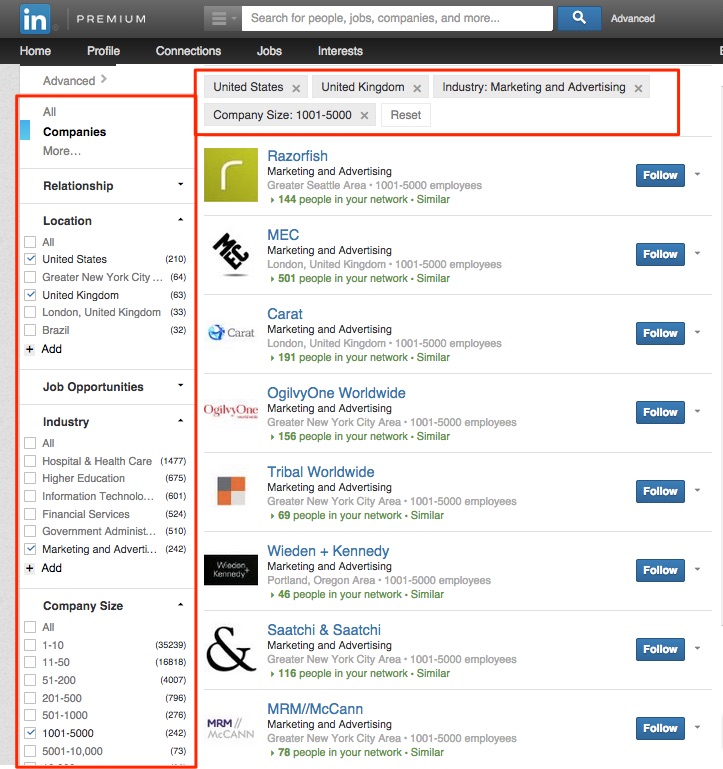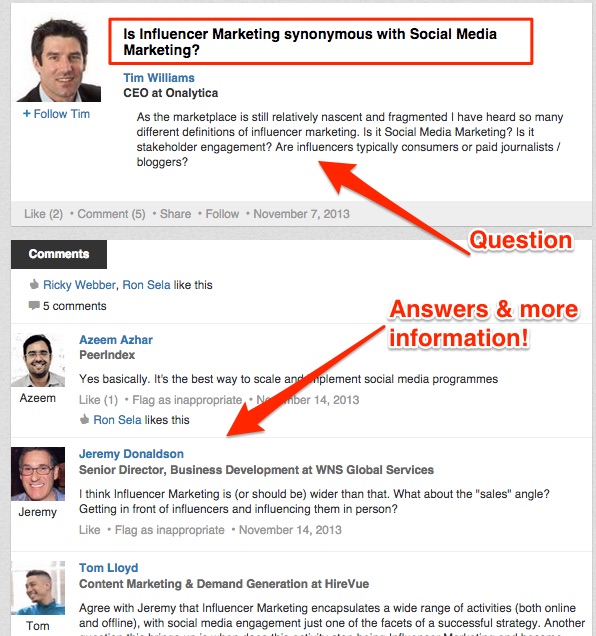Unlocking The Power Of LinkedIn As A Research Tool For Your Content
You can use LinkedIn to understand your audience and the types of content they're looking for.
Yes, LinkedIn is another social network, and yes, millions of people use LinkedIn. But that doesn’t mean you should be using LinkedIn as a billboard, like we said in the first article of this series. If you start sharing content and start spamming LinkedIn, chances are you will quickly dry out the potential of the platform.
There is however another, for some hidden, potential of LinkedIn. This is what I use LinkedIn for more than anything else. I’m sharing (for branding reasons), I’m connecting, but mostly, I’m researching. So I can find exactly the topics my audience wants to read about.
Research On Other Platforms
So many articles have been written about researching what people want to read about. “Content marketing” is now a must-do, but that has resulted in a lot of (mostly worthless) content on the web, making it even harder for brands to stand out. So marketers try and find a tool that works.
Researching content usually begins on a platform like Twitter, doing analysis to see what is being shared the most. It’s what makes tools like BuzzSumo so useful.
Content marketers see what topics are popular and write about those. The result? More of the same content, not necessarily standing out.
Being There Before The Answer Is Given
When researching your audience, you should try to figure out not just by looking at which topics are hot. While they help, and are a good first step, you should strive to answer questions.
When people share links to articles they like, it will be to articles that have already given them an answer (in most cases). So writing another answer probably isn’t the best way to go, unless you’re sure your answer is better than all the others (but you’ll still have to convince them of that, making it extra difficult to create outstanding content).
For your content to be shared, your content must be first to provide people with an answer to their question. That means you need to know their questions before they find the answer.
And this is where LinkedIn comes in.
LinkedIn will give me the problems my target audience runs into in their everyday lives, because it’s a more of a business platform than, for example, Facebook. People not only share their issues in groups, their profiles and their updates will tell me a lot as well.
Here are a few examples of how you can use LinkedIn to research problems.
Researching People And Businesses Using LinkedIn
As we know, LinkedIn is originally a connection tool. This means people are putting a lot of information on their profiles that is useful for us. This information will help us understand our audience a bit better and will help us find the right audience to target, both with our content, as well as with their outreach.
Advanced Search
I talked about the advanced search option before in my article on using LinkedIn as a connection tool. There I explained you can find influencers using the different filters available. You can use those filters as well to understand different metrics from your audience. When you start searching, LinkedIn will give you information on different levels, from people to topics, to groups.
This means the search is a great starting point. Have your list of keywords ready and start searching. Write down groups, write down names, and write down (related) topics that show up.
Using search you will also gather other interesting information about your audience: how are you related to them (you might be closer than you think), what type of companies does your audience work for and what are issues from those companies. And if people have properly set up their personal profiles and business profiles, you will also see the kind of solutions they are giving to their target audience. This is valuable information because it will tell you what they already know and where they probably want to learn more about.
The key to not getting lost in the enormous amount of information LinkedIn has hidden for you: using the right filtering.
For example, if you know that you’re targeting brands, you will want to filter your search accordingly: choose the right industry, the right size, and the right region, for example:

After that you can start zooming into companies. Look at Updates, the groups they are featured in, and see what related companies people also look for and specifically look at people related to the companies.
Why is it necessary to look at a persons level? Because it will give you much more information. No, you don’t have to look at everybody, but looking at a set of people in depth will be much more valuable than looking at big chunks of average data.
The Next Step: Finding The Topics
The next step is the really interesting part of researching: actually finding the topics. Again, we start off with search. By searching our keywords Linkedin gives us some valuable information already. Just look at this (not even finished!) search on influence marketing:

This search already gives me stuff to look at. There are the companies and showcase pages that will give me content related to the topic, but I’m most interested in the groups. It’s even easier if we just filter on groups in advanced search.
I want to find the right groups on these topics. These groups will tell me a few things:
- How interested are people in the topics: are the groups big? Is there a lot of discussion? This might be a good topic! Are they small and abandoned? Maybe not so interesting.
- Are the groups full of people asking questions or are people just sharing their own content in it? If the last one is the case, I’m up for some fierce competition, if it’s the first one, hello content!
The groups with questions are the ones I’m interested in most, because they will provide me with content ideas that are before the hype. This is where people ask questions about their every day (work) life. This is where they look for those in the same position, as they are, who might have the right answers.
I have to tell you: most groups are just about sharing your links, but if you find the right one, you can find a lot of questions for you to answer. And sometimes part of the answers are there as well. Like this one:

People’s Updates
Finally there are people’s updates on LinkedIn. These can be found using the advanced search. Start by filtering on posts, and search the terms you’re interested in.
This search will take you through the published articles from LinkedIn members. Now be aware, that these articles already written, so you will have to look further than just the topics. The numbers of views and shares are interesting here, as are the number of followers and the dates shared, but I’m mostly interested in the comments.
Unfortunately, LinkedIn doesn’t show this in the search results, so you’ll have to actually look at posts. Start with the most read ones and you will probably find relevant comments soon.
What Do The Comments Tell You?
Comments tell you a couple of things:
- They will give me more questions; some people follow up on articles with more questions or ideas.
- They will tell me if people have similar issues as the article discusses.
- The more comments, the more people are interested in the topic.
- It might lead me to more people and other posts with relevant information and questions.